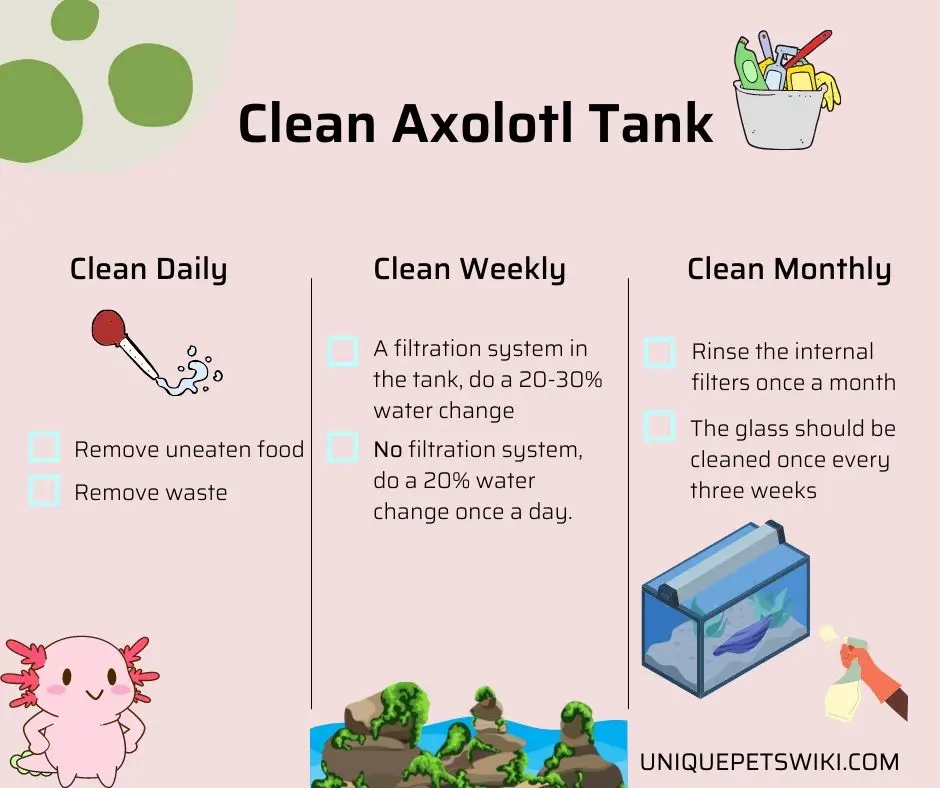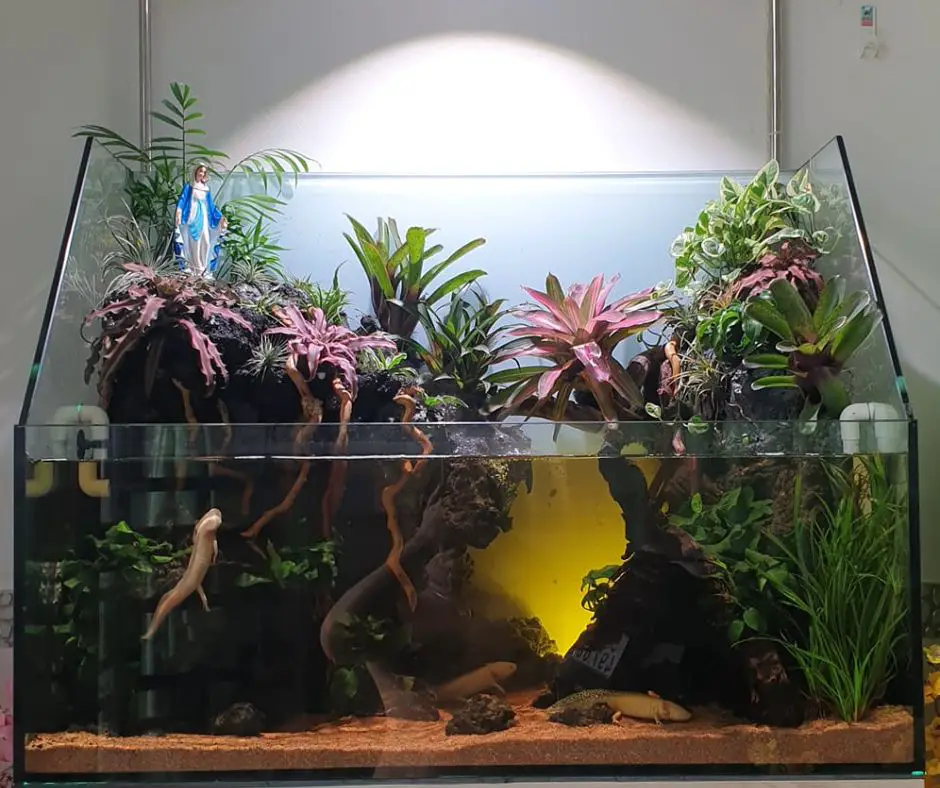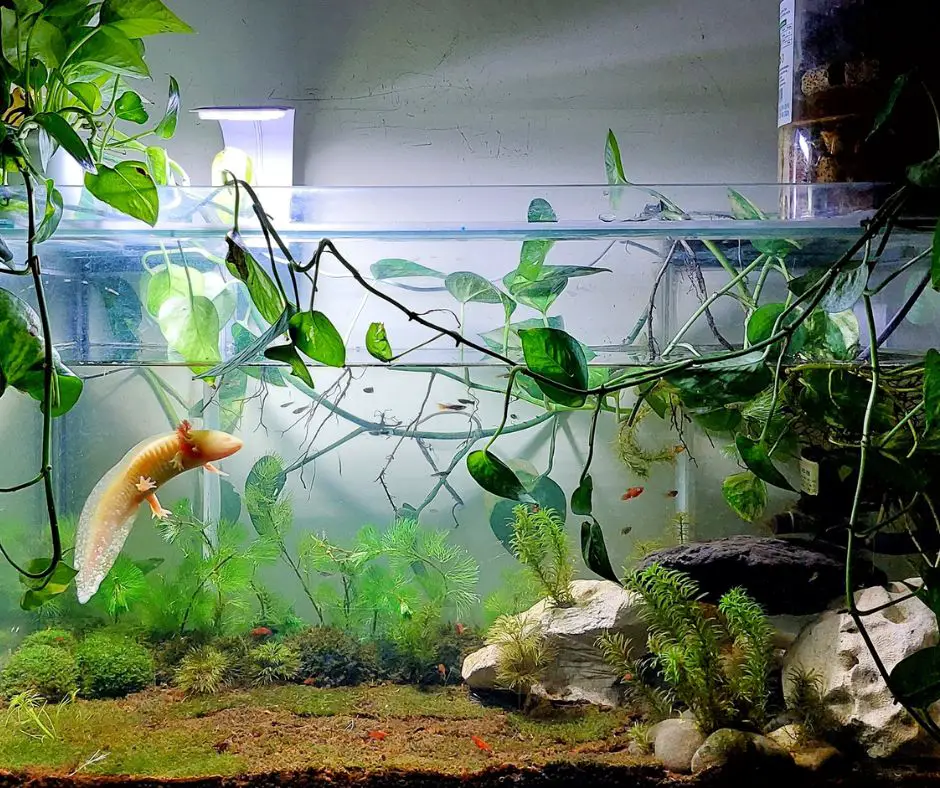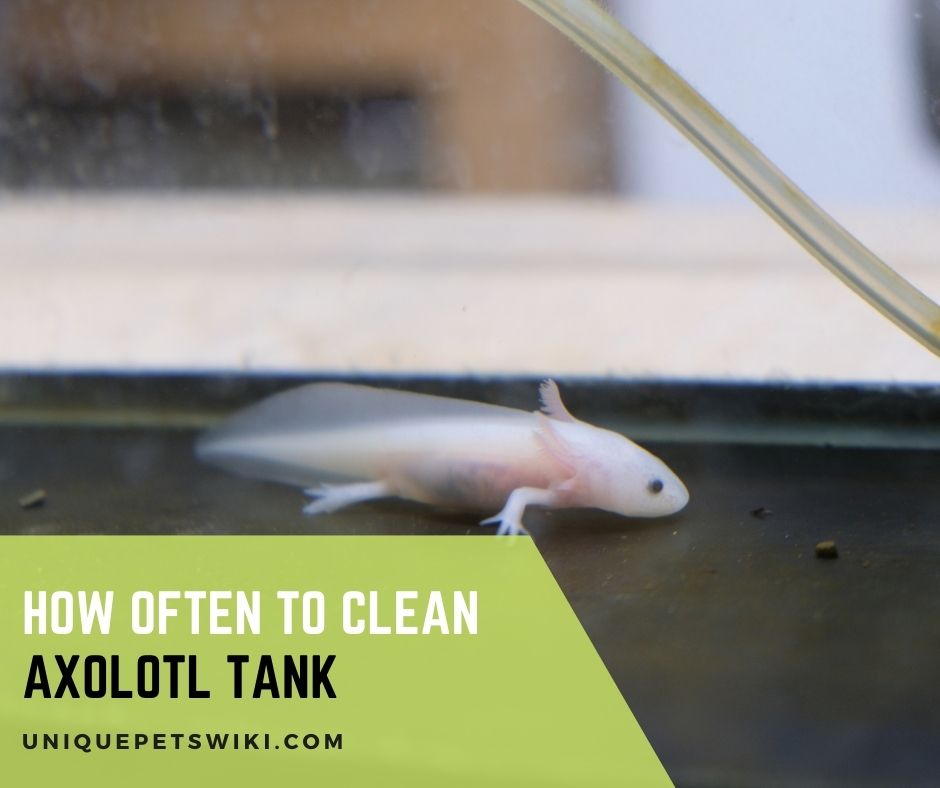To ensure the well-being of your axolotl, it’s important to keep the tank clean. But how often to clean axolotl tank?
How do you know when the tank water is unhealthy for your little friend?
Many new axolotl owners simply don’t know how often their axolotls tanks need to be cleaned, and what factors to consider when determining if the water is dirty.
We are going to answer this question in this post. Hopefully here you will find a comprehensive guide for keeping your axolotl tank clean. Keep reading!
Contents
How often to Clean Axolotl Tank?
Cleaning your axolotl’s tank is necessary for the animal’s health and well-being. Be careful about regular maintenance and make sure the water parameters are within the normal range.
Clean the tank with a gravel siphon at least once every two weeks. The filter doesn’t usually pick up all dirt and debris. Remove the pieces that are left in the tank.

Spot Cleaning (Clean Daily)
Make it a point to remove uneaten food or waste whenever you spot them. This is the best way to maintain the cleanliness of an axolotl tank. Use a turkey baster for this purpose.
Spot cleaning significantly reduces and slows down the contamination of the tank water.
Clean Weekly
If there is a filtration system in the tank, do a 20-30% water change once a week. And if there is no filtration system, do a 20% water change once a day.
Maintaining the cleanliness of an axolotl tank is a lot easier if the tank has a filter.
With that said, when determining how frequently the tank should be cleaned, take other factors into consideration, such as the tank’s size, the filter strength, the axolotl’s age and size, the food you give to the animal, and the number of axolotls in the tank.
Clean Monthly
Rinse the internal filters once a month. Make sure you don’t do it too vigorously, though. And you do not have to do it on the day when you change water.
The glass should be cleaned once every three weeks. Consider using a magnet cleaner for this purpose. Avoid doing a complete scrub because if you do so, the tank will re-cycle.
How to Clean an Axolotl Tank
Cleaning an axolotl tank is a pretty straightforward process. You just have to follow certain steps. For this, you are going to need some tools.
The procedure involves preparing the water, moving your axolotl from the tank, cleaning the tank, and then adding water. The entire process should take less than an hour.

Step 1: Materials
Here are a few things you will need:
- A aquarium vacuum hose or siphon
- A source of clean, fresh water
- 2 buckets (1 will do if the vacuum hose can be attached to a tap)
- A net
- A tub
Step 2: Preparing the water
Do not change 100% of the water in the tank. If you do that, you will actually end up killing off the beneficial bacteria in the water.
It’s important to neutralize the compounds in the water. Avoid using tap water directly. Rather use an aquarium conditioner to treat the water first.
We recommend you do a 25% water change. First, know how many gallons of water the tank holds, and then figure out how many gallons 25% would be.
For example, if it’s a 20-gallon tank, 25% of it would be equal to 5 gallons.
Therefore, you have to pour 5 gallons of water into the bucket and let the water sit for a couple of days. If the water contains harsh chemicals, let it sit for longer.
Aqueon Aquarium Algae Cleaning Magnets
- Magnet makes it easy to clean the inside of the aquariums from the outside
- Scrubber falls straight down if separated from magnet for easy retrieval
- Curved pad cleans flat and curved surfaces
- Weighted scrubber will not float away
- Can be used on glass or acrylic aquariums
Last update on 2022-12-29 / Affiliate links / Images from Amazon Product Advertising API
Step 3: Move Axolotl from Tank
Take a tub or bucket in which you can keep your axolotl. The tub must be large enough for your axolotl to stay in it comfortably.
Fill it with water from the tank. You can also use water you have prepared. Hold the axolotl gently and move it from the tank to the tub. You can also use a net to catch the axolotl.
Step 4: Clean the tank
If you are using a siphon, put it into the bucket to suck water out of it. And if you are doing it with an aquarium vacuum cleaner, make sure its end part reaches the bottom of the tank.
Now remove any feces or debris from the bottom of your axolotl tank.
The goal is to siphon out water and debris without removing the gravel substrates. If there are axolotl toys or tank decorations, remove them.
Use a brush or sponge, or both to clean the tank thoroughly.
Step 5: Add Water
Now pour the prepared water into the tank. Wait, before you do that, check the pH and other parameters of the water with a test strip. Be sure to thoroughly rinse the accessories with clean water.
There should be no trace of detergents on the accessories. If you are sure of that, feel free to put the accessories back in the tank.
Also, treat the water with a dechlorinator. It’s important to treat the water because chlorine can actually wreak havoc on the tank’s nitrogen cycle.
What Happens If You Don’t Clean Axolotl Tank
Cleaning an axolotl tank is essential because a dirty tank can be literally the reason for your axolotl’s death.
In fact, poor water quality is the most common reason for the death of axolotls in captivity.
Unless you do water changes regularly, chemicals and toxins such as ammonia will build up over time.
While a filter can slow down the change in water parameters, the water will eventually get polluted.
Disease-causing parasites will proliferate, making it hard for your axolotl to survive the hostile living conditions.
Axolotls are highly sensitive to ammonia ,and therefore you have to make sure that the level is never above 0 ppm.
High ammonia levels will have an adverse effect on your axolotl’s health and well-being, and the animal will eventually die.
How to Keep An Axolotl Tank Clean
Dirty water is a direct threat to your axolotl’s health and well-being. Spot cleaning is the most important part of keeping a tank clean.
Use a turkey baster to remove axolotl poop whenever you notice it. But that’s not enough.

Never skip the nitrogen cycle, even if you find the process time-consuming. The goal is to establish bacterial colonies and thus regulate the nitrogen cycle.
Bacteria turns ammonia into nitrite, and then nitrite is turned into nitrate. If the nitrogen cycle is performed properly, the ammonia level stays at 0 ppm.
Before you add substrates to your tank, stir them properly and eliminate contaminants.
Avoid using soil as a substrate unless you are sure that the soil does not contain chemicals, pesticides or critters.
Every week, do a 20% water change, even if there is a perfectly functioning filter in the tank.
In order to keep water parameters within a normal range, change water regularly. Use a water testing kit to test water parameters regularly.
Learn more here: How to Keep An Axolotl Tank Clean
API Water Test Kit
- Contains one (1) API FRESHWATER MASTER TEST KIT 800-Test Freshwater Aquarium Water Master Test Kit, including 7 bottles of testing solutions, 1 color card and 4 glass tubes with cap
- Helps monitor water quality and prevent invisible water problems that can be harmful to fish and cause fish loss
- Accurately monitors 5 most vital water parameters levels in freshwater aquariums: pH, high range pH, ammonia, nitrite, nitrate
- Designed for use in freshwater aquariums only
- Use for weekly monitoring and when water or fish problems appear
Last update on 2022-12-30 / Affiliate links / Images from Amazon Product Advertising API
Final Sentences
While some vets may recommend cleaning your axolotl tank every fortnight, more frequent cleaning is good for the health and well-being of your axolotl.
Ideally, you should spot clean whenever you spot poop or food waste and perform a 25% water change every week.
Yes, it requires some commitment on your part. After all, keeping a pet is a commitment.
Now that you know how often an axolotl tank should be cleaned, we hope you will never allow your axolotl’s tank to get too dirty.


